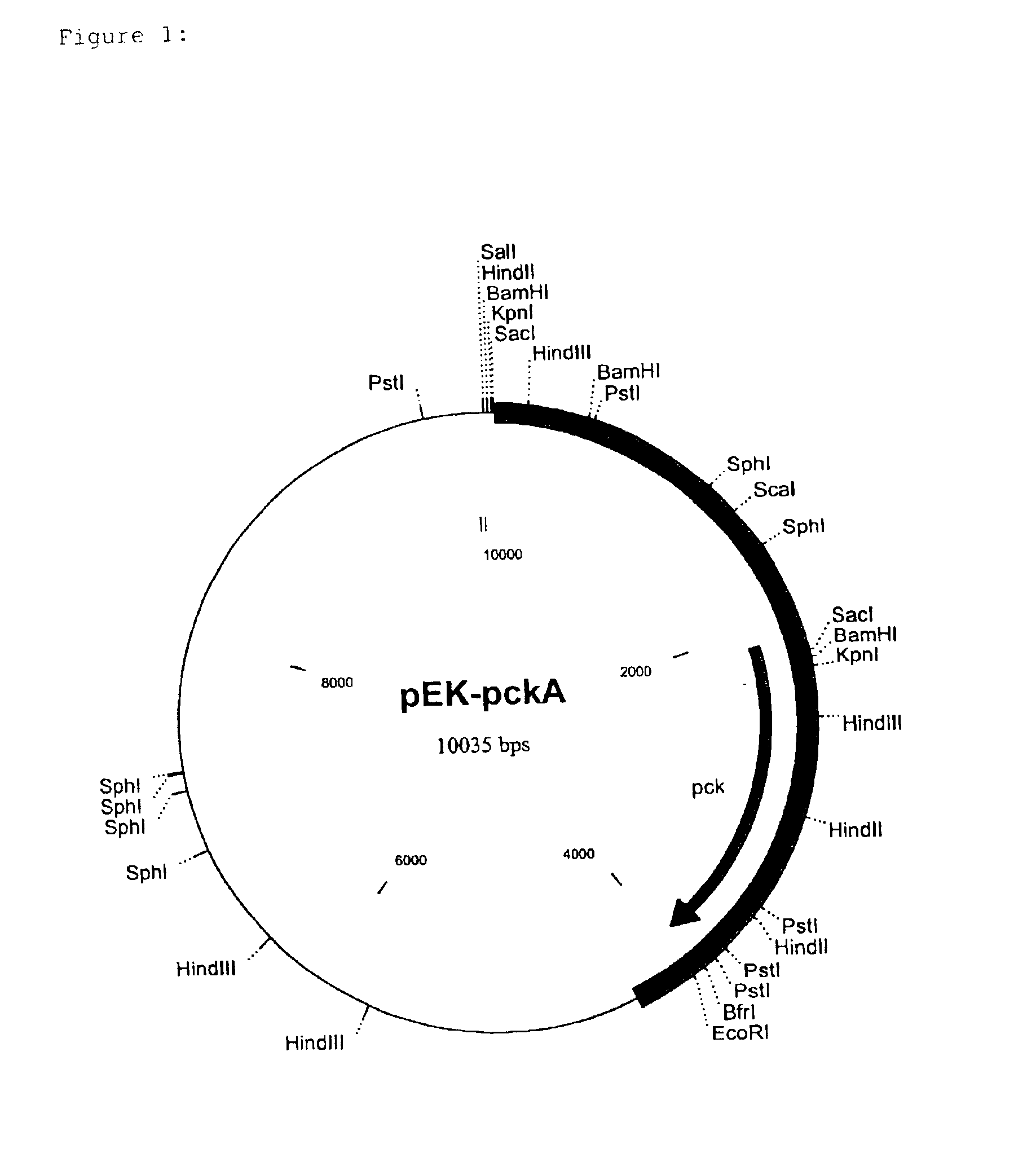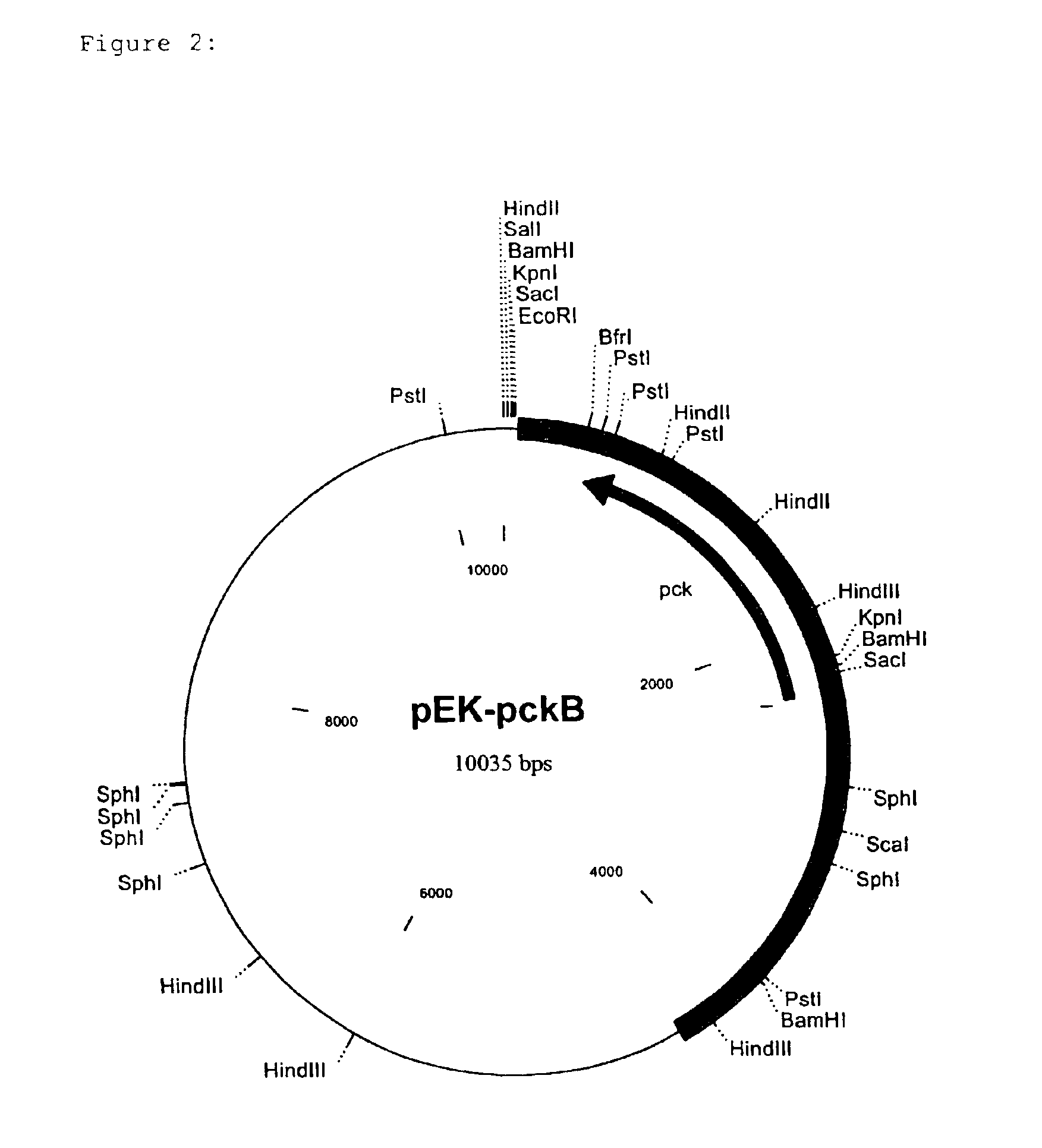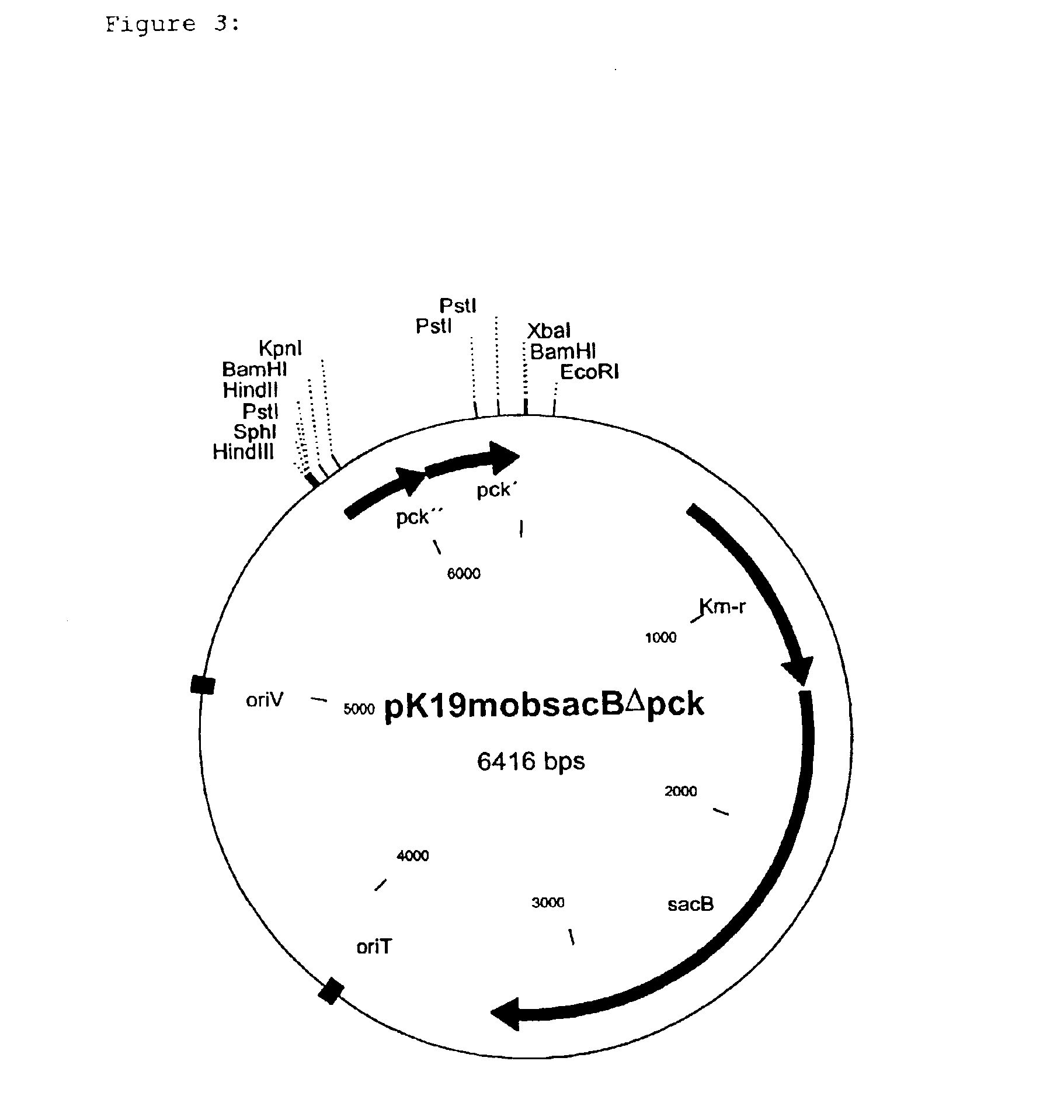Nucleotide sequences which code for the pck gene
a technology of nucleotide sequences and pck genes, which is applied in the field of nucleotide sequences which, can solve the problems of removing hybrids, reducing the stability of hybrids, and severely impaired growth on succinate as the sole source of carbon
- Summary
- Abstract
- Description
- Claims
- Application Information
AI Technical Summary
Benefits of technology
Problems solved by technology
Method used
Image
Examples
example 1
Isolation of the pck Gene
To isolate the PEP carboxykinase gene (pck) from C. glutamicum a cosmid gene library was set up on the basis of the cosmid pHC79 (Hohn and Collins, Gene 11 (1980) 291-298) by a known method (Sambrook et al., Molecular Cloning, A Laboratory Handbook, 1989, Cold Spring Harbor Laboratory Press). For this, chromosomal DNA was isolated from C. glutamicum ATCC13032 (Eikmanns et al., Microbiology 140 (1994) 1817-1828) and partly digested with the restriction enzyme Sau3A. After ligation of the resulting fragments into the BamHI cleavage site of the cosmid pHC79, the batch was packed into the protein envelope of the lambda bacteriophage and the E. coli strain ED8654 (Murray et al. Molecular and General Genetics 150 (1997) 53-61) was transfected with this. The recombinant cosmids were packed into the protein envelope of the lambda phage by a method of Sternberg et al. (Gene 1 (1979) 255-280), and the transfection of E. coli ED8654 was carried out by a method of Sambr...
example 2
Sequencing of the pck Structural Gene and Adjacent Regions
For the sequencing, the approximately 3.9 kb EcoRI fragment was isolated from pEK-pckA (an EcoRI cleavage site here originates from the vector pEK0) by known methods. The overhanging ends of the fragment were filled up to blunt ends with Klenow polymerase (Sambrook et al., Molecular Cloning, A Laboratory Handbook, 1989, Cold Spring Harbor Laboratory Press) and ligated into the EcoRV cleavage site of the vector pGEM-5Zf(+)(Promega Corporation, Madison, Wis., USA). The insertion of the plasmid thus generated was sequenced by the chain-stopping sequencing method (Sanger et al., Proceedings of the National Academy of Sciences USA, 74 (1977) 5463-5467). It is shown as SEQ ID No. 1. The resulting nucleotide sequence of 3935 bp was analysed with the HUSAR program package (release 3.0) of the Deutsche Krebsforschungszentrum (DKFZ=German Cancer Research Centre, Heidelberg, Germany). The sequence analysis of the fragments showed an ope...
example 3
Over-expression of the pck Gene
The plasmids pEK-pckA and pEK-pckB were introduced into the C. glutamicum strain ATCC13032 by electroporation with subsequent selection on kanamycin(50 .mu.g / ml)-containing BHI agar plates (Liebl et al., FEMS Microbiology Letters 65 (1989) 299-304) and the resulting strains were called ATCC13032 / pEK-pckA and ATCC13032 / pEK-pckB. These two strains and the starting strain were cultured in Luria-Bertani complex medium [Sambrook et al., Molecular Cloning, A laboratory manual (1989) Cold Spring Harbor Laboratory Press] and the PEP carboxykinase test was carried out in accordance with the method described by Bentle and Lardy [Journal of Biological Chemistry 251 (1976) 2916-2921]. The result of the analysis is shown in table 1, and shows that the PEP carboxykinase activity in the two strains with the plasmids pEK-pckA and pEK-pckB is 10 to 12 times higher than in the starting strain.
PUM
| Property | Measurement | Unit |
|---|---|---|
| temperature | aaaaa | aaaaa |
| temperature | aaaaa | aaaaa |
| temperature | aaaaa | aaaaa |
Abstract
Description
Claims
Application Information
 Login to View More
Login to View More - R&D
- Intellectual Property
- Life Sciences
- Materials
- Tech Scout
- Unparalleled Data Quality
- Higher Quality Content
- 60% Fewer Hallucinations
Browse by: Latest US Patents, China's latest patents, Technical Efficacy Thesaurus, Application Domain, Technology Topic, Popular Technical Reports.
© 2025 PatSnap. All rights reserved.Legal|Privacy policy|Modern Slavery Act Transparency Statement|Sitemap|About US| Contact US: help@patsnap.com



